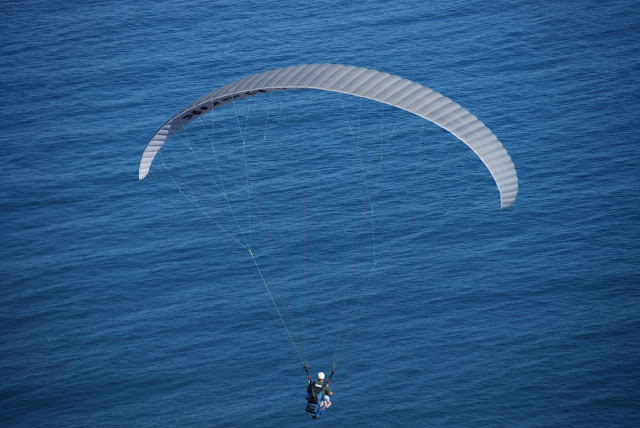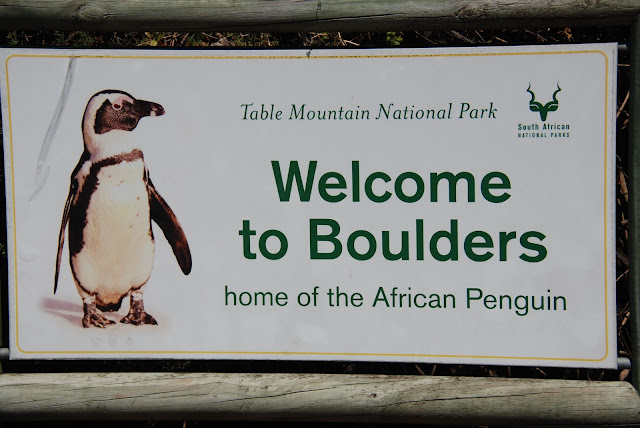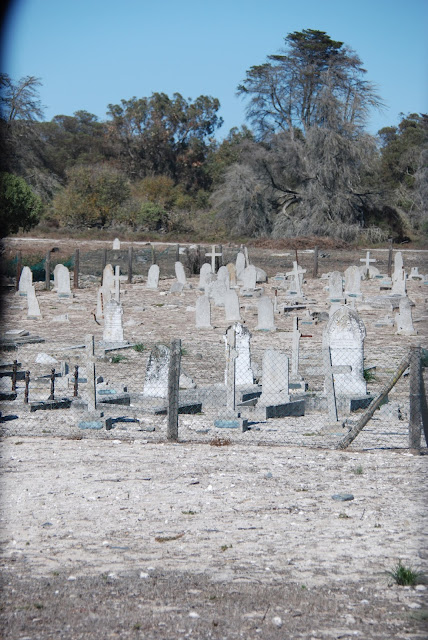On Our Way To
South Africa
South Africa, officially the Republic of South Africa, is the southernmost sovereign state in Africa. It is bounded on the south by 2,798 kilometers of coastline of Southern Africa stretching along the South Atlantic and Indian Oceans, on the north by the neighboring countries of Namibia, Botswana and Zimbabwe, and on the east by Mozambique and Swaziland, and surrounding the kingdom of Lesotho. South Africa is the 25th-largest country in the world by land area, and with close to 53 million people, is the world's 24th-most populous nation. It is the southernmost country on the mainland of the Old World or the Eastern Hemisphere.
Our bags are packed, tagged and we're ready to go!
We boarded our flight in Texas very early in the morning and was greeted by a sunrise from our plane window as we headed East towards JFK Airport.

We arrived in NYC to a bone chilling 35F degrees. It was tough leaving SPI Texas with its 80s to 90s, but we knew this would be short lived!
Our plane is waiting to whisk us away
Non-stop from NYC - JFK to Johannesburg, South Africa!
Only 7,978 miles
The Airbus A340 is a long-range, four-engine, wide-body commercial passenger jet airliner developed and produced by Airbus. The A340 was assembled at Toulouse, France. It seats up to 440 in the stretched -600 series with a range up to 9,000 nautical miles.
After connecting in Johannesburg, we flew to Cape Town
Our starting Point!
Cape Town!
Cape Town is a city in South Africa. It ranks third among the most populous urban areas in South Africa, after Johannesburg and Durban, and has roughly the same population as the Durban Metropolitan Area. It is also the provincial capital and primate city of the Western Cape.
As the seat of the National Parliament it is also the legislative capital of the country. It forms part of the City of Cape Town metropolitan municipality. The city is famous for its harbor, for its natural setting in the Cape Floristic Region, as well as for such well-known landmarks as Table Mountain and Cape Point. As of 2014[update], it is the 10th most populous city in Africa and home to 64% of the Western Cape's population. It is one of the most multicultural cities in the world, reflecting its role as a major destination for immigrants and expatriates to South Africa. The city was named the World Design Capital for 2014 by the International Council of Societies of Industrial Design. In 2014, Cape Town was named the best place in the world to visit by both The New York Times and The Telegraph.
Located on the shore of Table Bay, Cape Town was first developed by the Dutch East India Company as a victualing (supply) station for Dutch ships sailing to East Africa, India, and the Far East. Jan van Riebeeck's arrival on 6 April 1652 established the first permanent European settlement in South Africa. Cape Town quickly outgrew its original purpose as the first European outpost at the Castle of Good Hope, becoming the economic and cultural hub of the Cape Colony. Until the Witwatersrand Gold Rush and the development of Johannesburg, Cape Town was the largest city in South Africa.





As the seat of the National Parliament it is also the legislative capital of the country. It forms part of the City of Cape Town metropolitan municipality. The city is famous for its harbor, for its natural setting in the Cape Floristic Region, as well as for such well-known landmarks as Table Mountain and Cape Point. As of 2014[update], it is the 10th most populous city in Africa and home to 64% of the Western Cape's population. It is one of the most multicultural cities in the world, reflecting its role as a major destination for immigrants and expatriates to South Africa. The city was named the World Design Capital for 2014 by the International Council of Societies of Industrial Design. In 2014, Cape Town was named the best place in the world to visit by both The New York Times and The Telegraph.
Located on the shore of Table Bay, Cape Town was first developed by the Dutch East India Company as a victualing (supply) station for Dutch ships sailing to East Africa, India, and the Far East. Jan van Riebeeck's arrival on 6 April 1652 established the first permanent European settlement in South Africa. Cape Town quickly outgrew its original purpose as the first European outpost at the Castle of Good Hope, becoming the economic and cultural hub of the Cape Colony. Until the Witwatersrand Gold Rush and the development of Johannesburg, Cape Town was the largest city in South Africa.
Lets Tour the Area!
The Victorian Gothic-style Clock Tower is an icon of the old Cape Town harbor. It was the original Port Captain's Office built in 1882. The pointed Gothic windows surrounds the structure with a clock, imported from Edinburgh, as a main feature. The red walls are the same color as they were in the 1800's, having been carefully matched to scrapings of the original paint.
The main feature of Table Mountain is the level plateau approximately (2 mi) from side to side, edged by impressive cliffs. The plateau, flanked by Devil's Peak to the east and by Lion's Head to the west, forms a dramatic backdrop to Cape Town. This broad sweep of mountainous heights, together with Signal Hill, forms the natural amphitheater of the City Bowl and Table Bay harbor. The highest point on Table Mountain is towards the eastern end of the plateau and is marked by Maclear's Beacon, a stone cairn built in 1865 by Sir Thomas Maclear for trigonometrical survey. It is (3,563 ft) above sea level, about (62 ft) higher than the cable station at the western end of the plateau.
The flat top of the mountain is often covered by orographic clouds, formed when a south-easterly wind is directed up the mountain's slopes into colder air, where the moisture condenses to form the so-called "table cloth" of cloud. Legend attributes this phenomenon to a smoking contest between the Devil and a local pirate called Van Hunks. When the table cloth is seen, it symbolizes the contest.
Table Mountain is at the northern end of a sandstone mountain range that forms the spine of the Cape Peninsula.

Picture showing the clouds (Table Cloth) gone from Table Mountain!
Great Picture Opts Here!

Performers in Downtown Cape Town!
The Cape Wheel!
Even though the economy of SA is not good, Cape Town is a very modern city that is growing!
Sights and Sounds (Smells Too) Like Just Like Fisherman's Wharf
in San Francisco with the Sea Lions!
The Harbor!
Repairs
Fire Boat!
Private Yacht - WOW. See the Helicopter on Top!
SA Navy Ship
The Bo-Kaap is an area of Cape Town, South Africa formerly known as the Malay Quarter. It is quintessentially a Township, situated on the slopes of Signal Hill above the city center and is an historical center of Cape Malay culture in Cape Town.
Bo-Kaap is traditionally a multicultural area. The area is known for its brightly colored homes and cobble stoned streets.
Signal Hill (Afrikaans: Seinheuwel), or Lion's Rump, is a landmark flat-topped hill located in Cape Town, next to Lion's Head and Table Mountain.
The hill was also known as "The Lion's Flank", a term now obsolete. Together with Lion's Head, Signal Hill looks like a lion sphinx.
Signal flags were used to communicate weather warnings as well as anchoring instructions to visiting ships in order to ensure that they prepared adequately for stormy weather while in the bay. Similarly, ships could use flags to signal for assistance if, for example, an anchor line parted during a storm.
It is known for the Noon Gun that is operated there by the South African Navy and South African Astronomical Observatory. In 1836, a time ball was set up at the Cape Town observatory, however it was not visible to ships in the harbour, so a second time ball was erected on Signal Hill in order to relay the precise moment of 1pm Cape Mean Time. In this way ships in the bay were able to check their marine chronometers. The daily practice of dropping of the ball continued until 1934, when it was made redundant by radio signals.
The guns on Signal Hill were used to notify the public when a ship was in trouble and there was a possibility of casualties on the coast near Cape Town. Three guns would be fired from Chavonnes Battery, followed by a single gun in answer from Imhoff Battery.
Paragliding is Really Big Here!
What Views!
Heading East Now Towards The Cape Of Good Hope!
Cape Point is a promontory at the southeast corner of the Cape Peninsula, which is a mountainous and scenic landform that runs north-south for about thirty kilometres at the extreme southwestern tip of the African continent in the Republic of South Africa. Table Mountain and the city of Cape Town are close to the northern extremity of the same peninsula.
False Bay - Largest Breeding Grounds for the Great White Sharks!



The Cape of Good Hope is a rocky headland on the Atlantic coast of the Cape Peninsula, South Africa. There is a misconception that the Cape of Good Hope is the southern tip of Africa, because it was once believed to be the dividing point between the Atlantic and Indian Oceans. In fact, the southernmost point is Cape Agulhas, about 150 kilometres (90 mi) to the east-southeast.
Lets See Some African Penguins!
Next Stop
Robben Island!
Robben Island (Afrikaans: Robbeneiland) is an island in Table Bay, 6.9 km west of the coast of Bloubergstrand, Cape Town, South Africa. The name is Dutch for "seal island." Robben Island is roughly oval in shape, 3.3 km long north-south, and 1.9 km wide, with an area of 5.07 km². It is flat and only a few metres above sea level, as a result of an ancient erosion event. Nobel Laureate and former President of South Africa Nelson Mandela was imprisoned there for 18 of the 27 years he served behind bars before the fall of apartheid. Robben Island is both a South African National Heritage Site as well as a UNESCO World Heritage Site.
Since the end of the 17th century, Robben Island has been used for the isolation of mainly political prisoners. The island was also used as a leper colony and animal quarantine station. Starting in 1845 lepers from the Hemel-en-Aarde (heaven and earth) leper colony near Caledon were moved to Robben Island when Hemel-en-Aarde was found unsuitable as a leper colony. Initially this was done on a voluntary basis and the lepers were free to leave the island if they so wished. In April 1891 the cornerstones for 11 new buildings to house lepers were laid. After the introduction of the Leprosy Repression Act in May 1892 admission was no longer voluntary and the movement of the lepers was restricted. Prior to 1892 an average of about 25 lepers a year were admitted to Robben Island, but in 1892 that number rose to 338, and in 1893 a further 250 were admitted.
Robben Island was used as a prison for political prisoners and convicted criminals from 1961. It was a maximum security prison for political prisoners until 1991. The medium security prison for criminal prisoners was closed in 1996.
Leper Grave Yard
Sobukwe House
Robert Mangaliso Sobukwe (5 December 1924 – 27 February 1978) was a South African political dissident, who founded the Pan Africanist Congress in opposition to South Africa under apartheid. 
Floating Kelp Beds and Cape Town In The Background.
Rock pile started by Nelson Mandela and added to by former prisoners, one rock each, at reunion.
Listening to a Former Political Prisoner of Robben Island.
Mandela's Cell For 18 Years.
Next Stop Cape Agulhas!














































































